- Everest Region
- Mountaineering Expeditions
- Nepal
- Nepal Climbing and Expeditions
- Peak Climbing
- Trekking / Hiking
The Everest Base Camp Trekking brings you right into the heart of Nepal’s Khumbu region: the Sagarmatha National Park. The trek begins in Kathmandu with thrilling flight to Lukla Airport. The very first walk in Khumbu region goes along Phakding to reach to the beautiful Namche Bazaar. Heading upward, keep continue to explore the Sherpa culture and famous monastery of Tengboche. Feel like real mountaineer to reach the Everest Base Camp. One the way enjoy the breathtaking views of Mt. Everest, Lhotse, Cho Oyu, Nuptse, Pumari, Thamserku, Amadablam and most of the world’s highest peaks. Sagarmatha National Park (1148 km²) is the home of Mt. Everest and of course of different birds and animals Ghoral, Serow and Musk Deer. Nature Trail is would like to assist you with an affordable Everest Base Camp Trek cost for your upcoming visit to Nepal.
Are you ready for stunning mountain views, diverse landscapes and unique wildlife species?
Views from EBC and Kala Patthar
From Everest Base Camp you can observe refreshing spectacular views of numerous dangling mountains, including Everest, and typical Sherpa land with typical houses and landscapes. Therefore Everest Base Camp Trek is taken as the best and most popular destinations for trekking in Nepal. From Kala Patthar we can enjoy the most wonderful sunrise views on the Mt. Everest. Moreover, these magical moments on top of Kala Patthar are what will make your journey a memorable, once in a lifetime experience. Especially if you have ever longed to set eyes on the highest Himalayan peaks and Khumbu glaciers, the views from Kala Patthar will stay with you forever. You will be speechless from these overwhelming views of Mt. Everest, Mt. Nuptse, Mt. Pumori, Mt. Lotse, Mt. Changtse, Khumbu Glacier, Ama Dablam…from the Mount Everest Base Camp.
Itinerary Outline
Day 01: Arrival in Kathmandu and trip preparation (1370m)
02 Flight to Lukla and trek to Phakding (2610m) – 4 hrs walk
03 Trek Phakding to Namche Bazaar (3440m) – 5 hrs walk
04 Acclimatization day at Namche Bazaar
05 Trek Namche Bazaar to Tengboche (3860m) – 4 hrs walk
06 Trek Tengboche to Dingboche (4410m) – 5 hrs walk
07 Rest day at Dingboche (or day trip to Chhukung (4730m))
08 Dingboche to Lobuche (4910m) – 5 hrs walk
09 Lobuche to Gorak Shep (5140m), Expedition to Everest Base Camp (5364 m) – approx. 8 hrs walk
10 Trek to Kala Patthar (5545m), walk to Pheriche (4240m) – approx. 8 hrs
11 Pheriche to Namche Bazaar (3400m) – approx. 7 hrs walk
12 Trek Namche Bazaar to Lukla (2840m) – 7 hrs walk
13 Flight back to Kathmandu
14 Departure or extend your trip
Arrival in Kathmandu and trip preparation (1,370m.)
Flight to Lukla, Trek to Phakding (2610m)
Walking time: around 4 hours
Trek to Namche Bazaar (3440m)
Walking time: 5 hours
Namche Bazaar - Rest
Trek Namche Bazaar to Tengboche (3860m)
Walking time: 4 hours
Trek Tengboche to Dingboche (4410m)
Walking time: 5 hours
Rest at Dingboche
Trek Dingboche to Lobuche (4910m)
Walking time: 5 hours
Trek to Gorak Shep (5140m) & Everest Base Camp (5364m)
Walking time: 8 hours
Trek Kala Patthar (5545m), then Pheriche (4240m)
Walking time: around 7 hours
Trek Pheriche to Namche Bazaar (3440 m)
Walking time: approx. 8 hours
Trek Namche Bazaar to Lukla (2840m)
Walking time: 7 hours
Flight to Kathmandu
Day in Kathmandu
Mount Everest: Top of the World
Mount Everest is the highest mountain in the world. Its height is 8,848 meters. Its alternate names are Sagarmatha, Qomolangma, and Chomolungma. Mt. Everest lies on the border of Nepal and China, with half of the mountain lying on each side of the borders. Edmund Hillary and Tenzing Norgay first climbed Mt. Everest in 1953, with Hillary taking the photograph of Tenzing Norgay in the summit.
There are several bodies still lying on the upper portions of the mountain above the South Col on the Nepal side and the North East Ridge on the Tibetan side. There are 2 main routes, Southeast and Northeast, for climbing the Mt. Everest. Southeast is most frequently used route because it is generally considered safer and with easier access. Ascent via the southeast ridge begins with a trek to Base Camp at 5,380 meters on the south side of Everest in Nepal. Expedition members usually fly to Lukla (2,860 m.) from Kathmandu and pass through Namche Bazar. Climbers then hike to Everest Base Camp, which usually takes 6 to 8 days, allowing for proper altitude adjustment in order to prevent altitude sickness. Climbing accessories and supplies are carried by yaks and human porters to Everest Base Camp on Khumbu Glacier. In recent years, mountain climbers and explorers have been paying attention on Mt. Everest. It has become many brave people’s dreams to demonstrate their courage and skills by climbing onto the world’s highest peak. The weather is comparatively mild and steady with less rain or snow early March to late May, and again so from early September to late October. These are the two best seasons for tourists and mountain climbers.
Everest Base Camp
For foreign travelers, Everest Base Camp has become one of the most popular trekking destinations in Nepal, offering the chance to gaze on the magnificent north face of the world’s highest peak: Mount Everest. Famous for its amazing mountain peaks and the hospitality of its inhabitants, the Everest Region is one of the most visited destinations for tourists in Nepal. While some of the routes might be difficult, there are plenty of places to rest and enjoy meal along the way. Everest Base Camp is a term used to describe two base camps which are on opposite sides of Mount Everest: The South Base Camp is on the Nepali side with an altitude of 5,364m. The North Base Camp is on Tibet’s side at 5,150m. These camps are basic campsites on Mount Everest that are used by mountain climbers as base for their ascent and descent.
Trekking is possible the whole year round in this area. The best time to trek is from the beginning of March to May and from September to November. The winter is very cold and snow may make it difficult to travel higher than Tengboche, and lodges may be closed above this altitude. Summers, are wet and the spectacular peaks are often lost in the clouds. April and early May is a good time to view the hedgerows and trees stuffed into bloom, with Rhododendron, in particular, adding a spectacular spray of color to the landscape.
Tengboche Monastery
Tengboche Monastery also known as Dawa Choling Gompa, is in the Tengboche village in Khumjung in the Khumbu Region of Eastern Nepal. It is a Tibetan Buddhist monastery of the Sherpa community situated at 3,867 m. The monastery is the largest Gompa in the Khumbu region of Nepal. It was built in 1916 by Lama Guru with strong links to its mother monastery known as Rongbuk Monastery located in Tibet. It was destroyed by an earthquake in 1934 and was consequently rebuilt. In 1989, it was destroyed again by a fire and then rebuilt with the help of volunteers and international support.
Tengboche is famous because of its spectacular and distinctive location. It lies on the main route to the Everest Base Camp of Mt. Everest and offers the first clear views of the highest mountain in the world. Tengboche became famous to the world after Sir Edmund Hillary and Tenzing Norgay Sherpa made the first ascent of Mt. Everest in 1953. A lot has been changed since those days when Tengboche was remote and inaccessible. Today more than 30,000 people come every year to enjoy the beauty of Tengboche and splendor of the mountains.
Package details:
| DEPARTURE/RETURN LOCATION | Kathmandu | |||||||||||||
| JOIN GROUP | 1 before departure from Kathmandu | |||||||||||||
| SERVICE INCLUDES |
|
|||||||||||||
| SERVICE EXCLUDES |
|


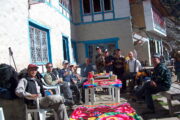
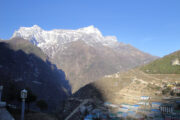
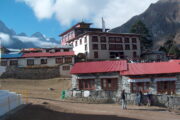
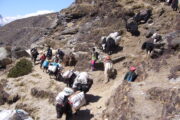
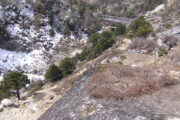
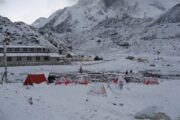
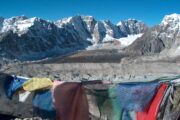
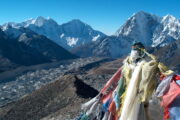
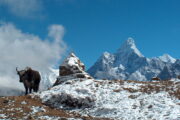
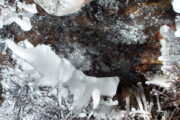
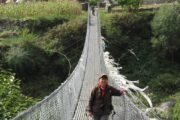
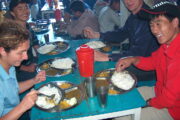
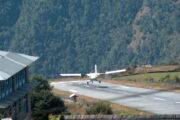
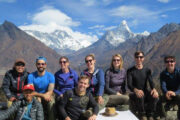
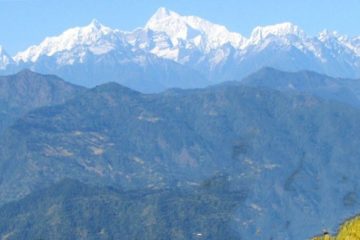
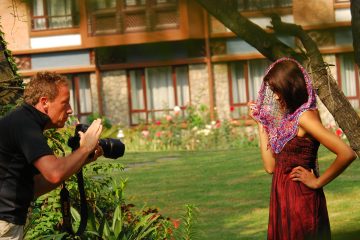
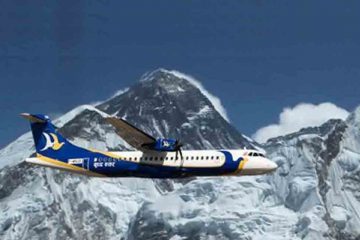
Tour Reviews
There are no reviews yet.
Leave a Review